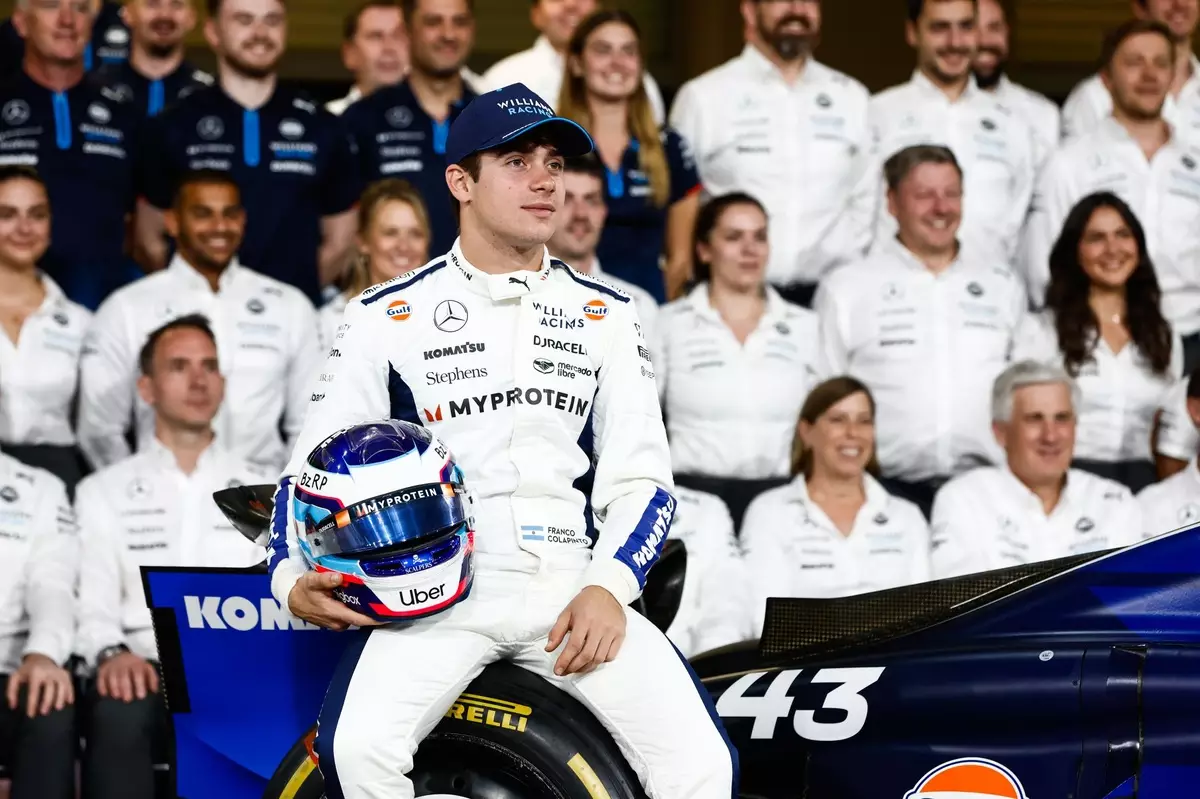The Journey of Franco Colapinto in Formula 1: Assessing Potential beyond Pitfalls
Formula 1 is a world where fortunes can change in the blink of an eye, and Franco Colapinto’s journey with Williams Racing is no exception. I remember watching his early races with a mix of excitement and curiosity, especially when he stepped in for Logan Sargeant. Monza was one of those standout moments where his performance seemed to captivate everyone watching. It wasn’t just about the points he scored; it was the way he handled the pressure that left an impression on me.
As someone who follows F1 closely, I am always fascinated by how quickly drivers must adapt to new challenges. Colapinto’s early success was a breath of fresh air for Williams, a team often trying to claw its way up the standings. The points he secured were not just numbers; they were symbols of hope for a brighter future for both him and the team. Watching him drive, there was a palpable sense of potential that made you believe in him.
However, motorsport is unpredictable, and this unpredictability adds a layer of complexity to every driver’s journey. For Colapinto, the season’s progression brought its fair share of hurdles. While initial performances attracted interest from big names like Red Bull, maintaining that momentum proved challenging as external expectations grew. It’s a reminder that in F1, consistency is as crucial as raw talent.
Key Takeaways
- Franco Colapinto made a notable impact during his initial Formula 1 outings with Williams Racing.
- His early performances attracted attention from top teams but also brought increased pressure.
- Challenges faced later in the season highlight the importance of car reliability and team dynamics.
Initial Success and Rising Expectations
Colapinto’s ability to acclimate to Formula 1 racing was clear right from the start. His contributions were pivotal for Williams, earning them five crucial points over three races. This feat did not go unnoticed; it stirred conversations about his potential future with other teams. The buzz around his name was exciting but also set a high bar for subsequent performances.
In motorsport, capturing attention is half the battle, and Colapinto managed to do just that early in his career. However, with attention comes scrutiny, and sustaining top-tier performance is no small feat. As fans and experts alike began projecting bright futures and possible moves to bigger teams, the pressure mounted. This scenario is common in F1—where young drivers are thrust into the limelight often before they’re fully ready.

The Season’s Challenges
The early promise seen in Colapinto’s driving gradually gave way to tougher times as competitive dynamics shifted within the sport. Notable crashes at critical races like Brazil and Las Vegas presented formidable obstacles. These incidents not only affected his standing within Williams but also influenced perceptions at higher levels within F1 management circles.
It was interesting to observe how quickly opinions can change in this high-stakes environment. Figures such as Christian Horner and Helmut Marko appeared to reassess their interest following these setbacks. It underscores how volatile driver assessments can be when results don’t align with expectations—a stark reminder of F1’s cutthroat nature.
The Role of Team Dynamics
One cannot discuss Colapinto’s journey without acknowledging the broader struggles faced by Williams as a team. Alex Albon, his teammate, has been vocal about the challenges posed by their car—the FW46—particularly towards the season’s end. It’s important to recognize that individual performance often hinges on equipment quality and team support.

Albon’s insights remind us that assessing driver performance requires looking beyond mere statistics or isolated incidents. The car’s waning competitiveness contributed significantly to their collective outcomes. As Williams navigated these difficulties, it became evident that both drivers had more than just personal battles—they were grappling with technological limitations inherent in their vehicles.
The Broader Context of F1 Challenges
Understanding Colapinto’s experiences involves appreciating the broader trials every F1 driver faces throughout their career. As cars become more challenging to manage under evolving conditions, drivers often find themselves tackling communal struggles within their teams rather than isolated issues alone.
This shared journey fosters resilience among team members—a quality vital for enduring success in motorsport arenas like F1. Even when results fall short of expectations, having teammates who understand these challenges creates an environment where growth becomes possible despite adversity.
Final Thoughts
The narrative surrounding Franco Colapinto’s debut season serves as an insightful case study into what makes Formula 1 so intriguing yet demanding: balancing individual talent against machine reliability while navigating immense pressure from various fronts simultaneously.
While some chapters may have ended less favorably than anticipated for him personally or for Williams collectively during this particular year—there remains hope grounded firmly within lessons learned along each step taken thus far together across unfamiliar terrain fraught inevitably still ahead too perhaps someday soon enough again anew hopefully eventually ultimately eventually yet assuredly surely somehow someday somehow indeed!
Franco Colapinto
Formula 1
Williams Racing
motorsport challenges


Leave a Reply